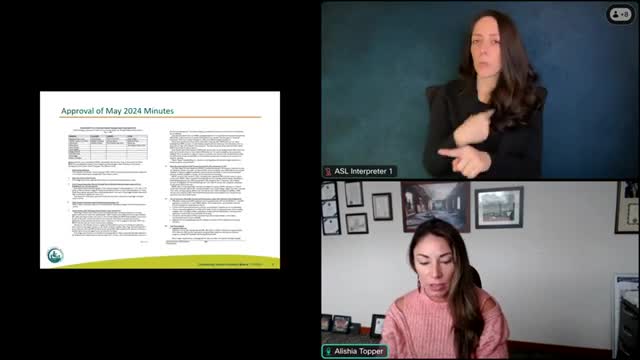Data reveals urgent need for action on homelessness crisis
July 08, 2024 | Clark County, Washington

This article was created by AI summarizing key points discussed. AI makes mistakes, so for full details and context, please refer to the video of the full meeting. Please report any errors so we can fix them. Report an error »

During a recent government meeting, the Council for the Homeless presented the findings from the 2024 Point in Time Count, a crucial annual assessment of homelessness in Clark County. Dale Whitley, the HMIS administrator, outlined the methodology and significance of the count, which provides a snapshot of homelessness on a single night each January. This year, the count took place on January 25.
Whitley emphasized that the count is mandated by both federal and state regulations, with Washington requiring an annual assessment, unlike some neighboring states that conduct the count biennially. The data collected focuses solely on individuals experiencing literal homelessness, as defined by the U.S. Department of Housing and Urban Development (HUD), excluding those who may be temporarily housed with family or friends.
The presentation highlighted the dual components of the count: the sheltered count, which utilizes the Homeless Management Information System (HMIS) to gather data from emergency shelters, and the unsheltered count, which relies on outreach efforts at various service locations, including food banks and libraries. Additionally, the count incorporates information from school district homeless liaisons and involves street count teams that survey individuals in encampments and other locations.
A significant aspect of the count is the Project Homeless Connect event, a one-day service fair that provides essential services to attendees while also facilitating data collection for the count. Whitley noted an increase in attendance at this event, which not only aids in gathering data but also connects individuals with vital resources.
The meeting underscored the importance of consistent data collection methods, including the use of a mobile app for surveys, which has streamlined the process and improved communication with those surveyed. Whitley acknowledged the contributions of community outreach teams and volunteers in making the count successful, reinforcing the collaborative effort required to address homelessness in the region.
As the council continues to analyze the data, the findings will inform future planning and funding decisions aimed at addressing the needs of the homeless population in Clark County.
Whitley emphasized that the count is mandated by both federal and state regulations, with Washington requiring an annual assessment, unlike some neighboring states that conduct the count biennially. The data collected focuses solely on individuals experiencing literal homelessness, as defined by the U.S. Department of Housing and Urban Development (HUD), excluding those who may be temporarily housed with family or friends.
The presentation highlighted the dual components of the count: the sheltered count, which utilizes the Homeless Management Information System (HMIS) to gather data from emergency shelters, and the unsheltered count, which relies on outreach efforts at various service locations, including food banks and libraries. Additionally, the count incorporates information from school district homeless liaisons and involves street count teams that survey individuals in encampments and other locations.
A significant aspect of the count is the Project Homeless Connect event, a one-day service fair that provides essential services to attendees while also facilitating data collection for the count. Whitley noted an increase in attendance at this event, which not only aids in gathering data but also connects individuals with vital resources.
The meeting underscored the importance of consistent data collection methods, including the use of a mobile app for surveys, which has streamlined the process and improved communication with those surveyed. Whitley acknowledged the contributions of community outreach teams and volunteers in making the count successful, reinforcing the collaborative effort required to address homelessness in the region.
As the council continues to analyze the data, the findings will inform future planning and funding decisions aimed at addressing the needs of the homeless population in Clark County.
View full meeting
This article is based on a recent meeting—watch the full video and explore the complete transcript for deeper insights into the discussion.
View full meeting
